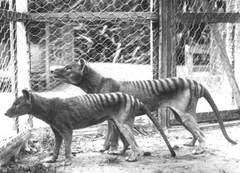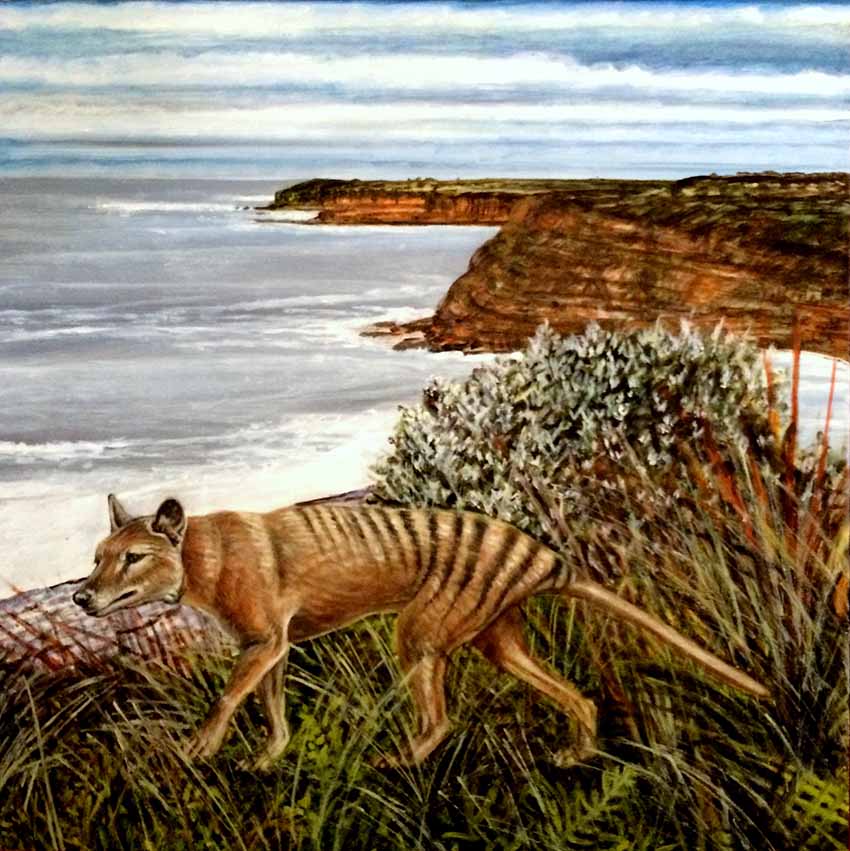SYDNEY artist Filippa Buttitta first heard of “the Wonthaggi Monster” in 2016 when she visited the area.
Having just completed a series examining the Australian image of the Lost Child in the Bush, she was intrigued by this other enduring cultural image of “the mysterious creature” from the bush and the stories it inspired.
The “Wonthaggi Monster” appeared in print for the first time on December 1, 1955, when Tom Gannon, editor of the Powlett Express, wrote about sightings of a strange animal in the area around Wonthaggi. Gannon continued to be inundated with information about sightings. Most people claimed to have seen it crossing a road in an uninhabited section along the coast. Many sightings occurred near the Bass/Grantville area.
Since that first story, there have been more than 100 newspaper articles about the ‘Wonthaggi Monster’, now often assumed to be a thylacine, or Tasmanian tiger.
Buttitta began reading the local newspaper accounts and more widely about the history of thylacine sightings since they were declared extinct in 1986. (The last conclusively reported thylacine died in the Hobart zoo in 1936, the species having been hunted to the point of extinction.)
 The last confirmed thylacines, Hobart Zoo, 1936. Photo: Tasmanian Museum.
The last confirmed thylacines, Hobart Zoo, 1936. Photo: Tasmanian Museum. The resulting exhibition is a quirky collection of Wonthaggi landscapes featuring the Monster: in front of the Wonthaggi Hotel (“The Whalebones”), walking towards the Wonthaggi windmills, at Shack Bay, and checking out the local real estate.
This is no frightened lost creature on the edge of extinction but a calm and rather knowing animal who lives on the edge of our existence, just out of sight.
There still exist groups dedicated to the discovery and possible revival of this animal, which continues to haunt the Australian imagination, perhaps because humans wilfully set out to exterminate it.
For all the claimed sightings, there is so far no conclusive photographic proof and no remnants have been formally identified. Scientists have also talked about the possibility of cloning a thylacine from museum specimens.
“I don’t claim to be an expert on the animal,” Buttitta says. “I’m just an artist on a journey, learning a lot about the way Australia has created a sense of ongoing folklore surrounding the animal and looking at the way such a creature seems to live on in many ways."
Does she believe thylacines still exist?
“There are the believers and non-believers. I’ve kept an open mind. I’m neither on one side nor the other."
As an interesting sideshoot of her research, she interviewed Professor Michael Archer, a paleontologist and former director of the Australian Museum, who is working on a project to clone a thylacine. She has asked him to sit for a portrait for the Archibald Prize and will be painting his portrait in the ArtSpace gallery, surrounded by her thylacine series.
The Wonthaggi Monster: ArtSpace Wonthaggi from February 26 to March 26. Visitors are welcome to discuss their experiences of thylacines and/or Wonthaggi monsters.
The well of creativity: An isolated childhood forged Filippa Buttita’s pre-occupation with art, she tells Liane Arno.
